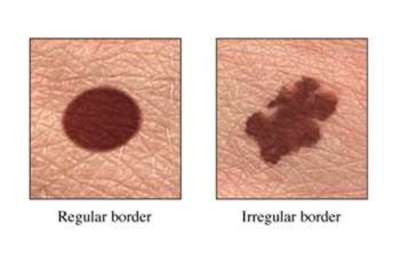In this Article
Melanoma
Moles
What are Moles
Moles are small, usually dark skin growths composed of a group of cells called melanocytes. These cells make the pigment melanin. Moles are very common. The average adult has about 40 to 60 moles and other skin growths.
Moles often are black, brown, or tan. They usually are no bigger than a pencil eraser and are round or oval in shape. Moles may be flat or raised. They may be present at birth or develop during childhood, and almost all are present by age 40.
The medical name for a
Certain kinds of moles called dysplastic nevi, or atypical moles, are typically bigger than ordinary moles. They look different than regular moles. They may appear on sun-exposed areas of the skin, or on areas that get little sunlight, like the buttocks or scalp. Dysplastic nevi tend to run in families. Individuals who have dysplastic nevi are at a greater risk of developing malignant melanoma, especially if they have a positive family history of melanoma.
The average person has dozens of moles and other benign skin growths. They include:
- Birthmarks, or “nevi,” are moles that are present at birth.
- Acquired moles begin to develop early in adolescence, growing and darkening throughout the teenage years. Many adults have 40 to 60 acquired moles.
- Liver spots, or “solar lentigines,” are flat tan-to-brown spots that occur mainly on the face, neck, hands, and forearms. They have nothing to do with the liver. Rather, they develop as a result of aging and sun exposure.
- Seborrheic keratoses are raised, wart-like, tan-to-brown growths that occur as people age.
- Acquired cherry angiomas are smooth, dome-shaped red spots that usually develop on the chest and back. Most are bright red and appear as people age.
- Skin tags are small, soft flaps of skin that grow on the neck, in the armpits, and groin area.
- Actinic keratoses are slightly scaly, reddish patches that form on people with sun-damaged skin. They are pre-cancerous growths that may change into a squamous cell carcinoma, so doctors usually recommend having them removed.
Although most skin growths are not cancer, it’s important to check with the doctor about new growths or changes in old growths.
In many cases, the first sign of skin cancer is a mole that changes in size or color, or becomes a sore that does not heal.

